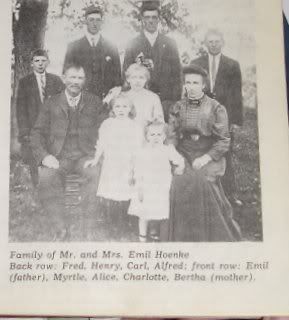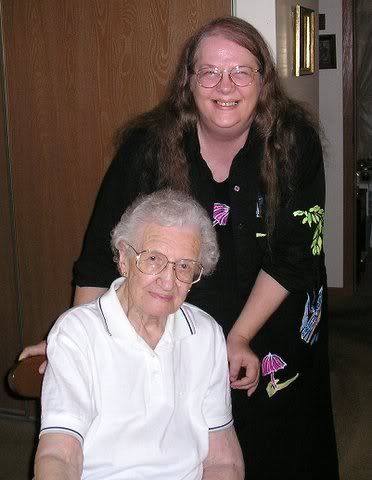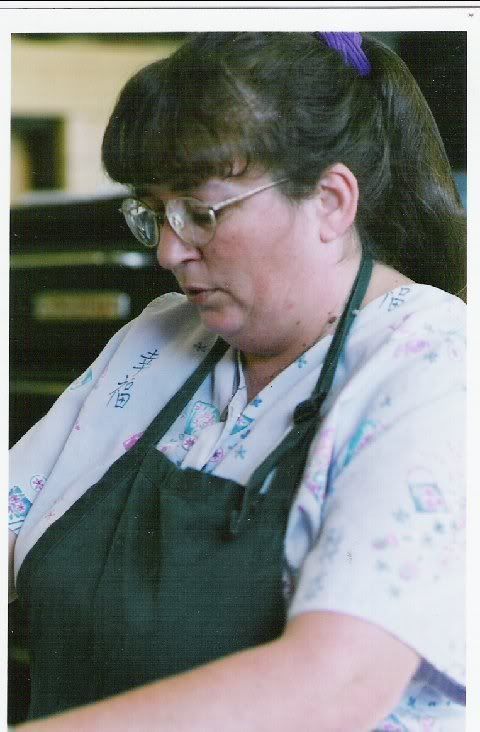WOOOHOOO Mini Papers DONE!

Ok … ok … this is me at home central. We’ve just handed in the last assignment and we have a spare 11 minutes on the clock WOOHOOO. I want very badly to talk to Deb, but I don’t dare. If I start talking … I’m never going to want to go back to work. It’s almost 4 pm now … and we’re right on schedule. We had to gobble down 15 in this last period of time, but we’re pretty close. I might start 15 off of 4 pm. I’m so anal when it comes to the clock. Hmm. Kind of charged up here … I think it has to do not only with finishing, but in getting coffee drank at this late time of the day. Oh man … I just thought of something … there are 2 Hard Mike’s in the kitchen … That will surely be then the reward for finishing the coursework part of the class.
Hehehe I just got a note from Deb … she sounds in a good mood … I don’t think she’s fallen today yet! WoooHOOO!!!
I’m going to take a peek to see exactly what we have to do in this last paper. I think though its kind of a summary free floater.
Aha!
Select a topic related to an area of social psychology from this unit's readings. Analyze recent research in the area, and describe how you could apply the information to your current or future professional situation. For this assignment, you may focus on the topic you plan to write your final paper on or you may choose another applied area of social psychology. Feel free to take the opportunity to focus on your topic for the final paper.
So … maybe I could start thinking slowly about what I’d like to write a paper on. I’ve got to narrow it down from the last 19 papers written or focus it on the Big one. Hmm. I pulled up the Masters’ blog where it lists all the topics we’ve studies … Now maybe too I should find the big paper? Where did I put that. Someone needs to dust off her work.
While we’re waiting this is a list of everything we’ve worked on this semester.
History of Social Psychology
Scientific Discipline
Process
Roots
Differences
Self-esteem
Mate Selection
Romantic Love
Bystander Help
Altruism
Violence and Aggressive Behavior
Gender Differences
Attitude and Behavior
Persuasion
Obedience
Instruction
Group Formation
Group Cohesion
Health and Stress
Man … have we been busy! I don’t know how to make my mind think through all of that. Oh yeah … go get the big paper.
Oh man … was that a long time ago. I didn’t even remember what we were writing on … I do know that as soon as I get back into it though, I will be pretty excited. I really want to do a good job on her. I think I had notes somewhere too better look those up … I think they’re on OneNote. Pswooh … It took a few moments, but I found the document … I was getting scared because nothing was making sense. There were quite a few documents with the heading of Outline and a few that said they were final somethings. Remind me we left it back at Chapter 5. It looks like we’ve gotten the paper to the 5th part of 7, but the 5th part is like seven parts long. I better try to figure out what the short outline means.
Introduction
The question would be what is the relevance of social comparison especially in relationships and in learning?
1. Social Comparison and self-insight
2. Relevance/irrelevance of comparing self up/down
3. Within groups and between groups
4. Receiving feedback from others
5. In a discrimination-distressed relationship
a. Being stigmatized
b. Being threatened
i. Affiliation with others
ii. The role of cognitive clarity
iii. Being big fish in a little pond, little fish in a big pond
iv. Lowering comparisons by devaluating self
v. Poor performance
6. New theory of self-perception
7. The effect of social comparison on learning and goals
This is it. It looks like I’m on the 8th page with a goal of 25, so I was right in thinking we’re 1/3 of the way through. Hmm … on a hunch and a prayer … we sent in the document (final paper) as far as we were. I thought she’d appreciate something. We told her we would write the last little assignment summarizing where the final paper was at. I thought it would be good to review as a link back into the paper. Final little papers are kind of fun because they give you an idea of the space you been through and the process in saying good-bye. It’s in that respect kind of hard. Ok … I’ll let you read too. This is where we’re at so far. I’m sorry if it will be repeated later.
This is the face that is saying … shit, shit, shit. BUT, we don’t swear … so skip those last few words. Please? Ok … what to do what to do.
Well, for better or worse, we are simply going to need moving on. The time is now 3:52 pm, which means that I’m about one hour or half way through my research period. I think the big problem is that I had difficulty with the entire scope of the paper … 25 pages is tough. I’ve got a lot of small interesting pieces, but together there was too much filling in of the gaps to make things work, that sometimes did, but sometimes didn’t. I am not able to hold it all together, so we’re figuring it out one statement at a time. I need to make this a more pleasing situation. Better review the assignment again …
Select a topic related to an area of social psychology from this unit's readings. Analyze recent research in the area, and describe how you could apply the information to your current or future professional situation. For this assignment, you may focus on the topic you plan to write your final paper on or you may choose another applied area of social psychology. Feel free to take the opportunity to focus on your topic for the final paper.
Start Paper Here …
The topic of this social psychology unit paper is going to be my final paper, which is on the relevance of social comparison especially in relationships and in learning. I believe this came to be during the third week of this course. I was looking for an area to study that matched my interests and I didn’t mind if the area was fairly new to me. I knew that Festinger had been the one to develop the theory and I had felt comfortable with him being a well-known psychologist. I thought his theory would hold weight, especially because it had been an important theory for over 50 years.
My final count on resources for the final paper was 19, which was a lot for me to hold together mentally. I knew it would have to occur to me through the writing process. Three elements assisted in this work, which were the short outline, the long annotated outline, and the annotated bibliography. It was a long drawn out procedure to get the short outline to where it stood. Then I had to backtrack and try to figure where all the notes I had taken would fit in. The annotated work was easier in comparison. When it came time to write the paper or at least the first 1/3, I collected all the notes and hoped they would lead me to where I needed to go next. What was working for me at the time was to imagine scenarios that might help to bridge the understanding of the citations. At the time I had collected them, they had seemed more relevant than they are now when I look at them. Now almost 5 weeks later, I have the opportunity of seeing the work from newer eyes. It is still of great interest to me. Not only are social comparisons universal, the process of putting together this many resources in a paper would be an important writing exercise.
The initial trend many researchers had in noting the work of Festinger assisted in providing me a focus. The first small section would be Festinger’s section. My outline had been organized to go from the oldest to the newest citation dates. The earliest researchers, Kruglanski (1990, p. 301), Buunk (1990, pp. 1238-9), and Butler (1992, p. 934) were saying 40 years after Festinger that social comparisons were useful in asserting similarities and differences between people, squelching fear (lessening emotional intensity), enhancing self and clarifying task parameters. The middle researchers Gibbons (1994, p. 638) and again Butler (1995, p. 347) asserted that Festinger’s social comparisons were more than self-evaluative; it had diagnostic value, which could be used to assist in learning and self-improvement. This seemed then to be a richer theory and of particular interest to me. The late researchers Davison (2000, p. 206), Heine (2002, p. 904), and Kwan (2004, pp. 94-96) emphasized bi-lateral (direct) comparisons over professional, spontaneous rather than deliberately aware comparisons, and a stronger sense of self-evaluation as a drive where people were viewing themselves more positively than others had viewed them. This seemed to me to imply a sense of urgency. It was as if we reached past how to be better people and were now looking at means of winning out or over-shadowing others as perhaps (conscious to unconscious) survival mechanism.
Because the paper isn’t written yet, and I’m already wondering if most has to be done over, I thought it might serve a useful function to tie together the first thoughts with these new eyes with the last thoughts. Because I think things magically work like this in their own space and time, I wanted to understand perhaps a cleaner, clearer direction that would be more user- friendly. I had also known that my paper was going to wind toward the direction of learning and goals. Understanding the psychology of learning was the most important goal I have at Capella and I’d been excited over the last year or so of setting goals as an aspect of self-regulation. So for this next moment, we’ll look ahead and try the same formula of comparing years to production of research thoughts.
The first researchers were Abbott (1990, 204), Buunk (1990, 1239), and Butler (1992, p. 935) and they showed that students had a positive comparative interaction with peers in evaluating their teachers, asserted that comparison dimension was a mature achievement skill, and that adopted goals of mastery and task would affect the achievement or promotion of proficiency. The middle researchers were Gibbons (1994, p. 651) and again Butler (1995, p. 347) and they emphasized positive comparisons as self-diagnostic and protective as well as being environmental friendly and that effortful learning or goal performance depended on the development of competence and satisfaction, which included surpassing others. Buunk, Gibbons, and Butler had each written in the initial paragraph. The late researchers Blanton (1999, p. 426) and Marsh (2003 p. 364) stated that comparative level choice and evaluations predicted academic performance (self over other) and that the central goal of education is the enhancement of self-concept especially due social inequities and that self-concept included self-reliance and academic achievement as outcome variables. It was imperative to think and feel positive about oneself which would also transcend traditional disciplinary barriers through choice, planning and subsequent accomplishments.
I’m thinking I would like to cross-check the work first from start to finish.
During the early work, 1990-1992, researchers understood social comparison to be useful in noting how people were categorically the same or different. They found that in fearful situations, it was more calming to compare self with another. The researchers knew that one could enhance themselves by social comparison and that task parameters could be set by looking at the work of others. Compared to pen and paper evaluations of their teacher, students who compared with each other as they made their evaluations were more satisfied. As an achievement goal, making comparisons was a mature activity and proficiency could be achieved through mastery and task goals. As an example why don’t we draw on Abe and Beth met each other in 1990. In some ways they were alike and others they are different. Abe and Beth preferred each other’s company in tense situations like when they evaluated their teacher. By comparing themselves to each other they became stronger and their work more proficient. Abe and Beth acted very mature in using mastery and task goals.
So far, so good - the thought patterns are much simpler. Let’s continue to the middle years. Researchers in 1994-1995 wrote that not only were social comparisons self-evaluative (assessing how Abe and Beth are doing), they could be used to figure things out, which would help Abe and Beth learn and become better people. This seems similar to mastery or task goals, but perhaps more personal and less task orientated. Gibbons (1994, p. 638) added that positive comparisons could be self-protective which seemed evolutionary, adaptable, and generalized to whichever environment. Learning or goal performance that was effortful was depended on the development of competence and satisfaction. If Abe and Beth were happy with their progress and worked hard, they could meet their learning or goal objectives, which sometimes meant they passed up their friends.
During the years 1999-2004, Davison work emphasized the value of Abe and Beth comparing themselves to each other rather than to a professional as their teacher. In addition natural comparisons that weren’t thought-out were better than comparisons that were thought-out. Social comparisons were thought of as a drive for both Abe and Beth to like themselves better than they liked each other. We had come to a thought of this again as a survival mechanism, which seemed to imply urgency. It was important that Abe and Beth not only liked themselves better, they were to become better than others. By evaluating and making choices, they could become the better performers. Marsh felt strongly that the outcome of education should be that we set the central goal to be enhancing the self-concept, especially because the way it is “things aren’t fair.” To do this not only do students need to perform academically, they must become self-reliant learners. To surpass boundaries of the past, one needs to feel positive, make choices, plan, and work toward further advancement.
This feels very impressive to me. I don’t know whether it is the paper coming out onto itself, or if I’m lending it more than a fair hand, but the conclusion that we just drew, couldn’t explain better the values I hold dearest to heart. I’m very excited with the work, but also realize that I will have to cut down its scope to fit within the paper’s scope. I think I would like to keep at this time this paper as the actual start of my larger paper. I enjoyed it very much, felt comfortable, and am delighted with the addition of Abe and Beth who started out as individual A and individual B. It seemed to make a lot more sense than using all the alternative examples that I had in the past. And, as a whole although the material is difficult, it seemed smoother and more understandable to me. I also liked and am going keep the divisions in time. I would like to think that researchers studied and improved upon each other’s work over the course of 15 years. One other thought that I had while doing this minor paper was that I was going to continue working at polar ends of the paper until I meet in the middle … well take one section at a time and reverse back and forth until the length requirements are met. I’m afraid that may leave out a bit in the middle, but when I write, I do so intuitively. And, at this moment, it seems the way to go.
References
Dr. ...,
I’m not going to say good-bye just yet, because I want to continue seeing you within my vision as we take-up this last challenge of the major paper. I think that most of what we do can be learning and I would like to think that of this quarter. I very much appreciated that although there was not much dialogue between us that you did not become negative of me; by contrast I felt supported. The grades you were giving me were also very supportive and added to my desire to keep working hard at producing the best papers I could in the time allowed. I’ve learned some over this last weekend in having written 5 papers that I liked in 3 days time. I must then be able to write more dedicatedly. I am going to try harder than ever to meet deadlines. There were a couple of methods that I’ve been using that seems to work. First, everything I write, I write in a blog as I am progressing through the day or through the work. I also make heavy use of a webcam to be taking still shots or videos as we go through time. This seems to help in that we keep checking ourselves to see whose out. Usually, we are looking to see if we can still appreciate whoever it is that is smiling back at us. Secondarily, I’ve made heavy use of a kitchen timer. I set a pace for only 2 hours of research, 2 ½ hours to write, and ½ hour to edit. Most of the time, we felt a better sense of discipline and we stayed closer to the correct mark. In great part this was done in appreciation of your patience. Though according to my new paper theories, this was mostly done for self-advancement. I hope to be thinking of you again soon, but for now it’s about bed time. Thank you for being there.
Ann

















